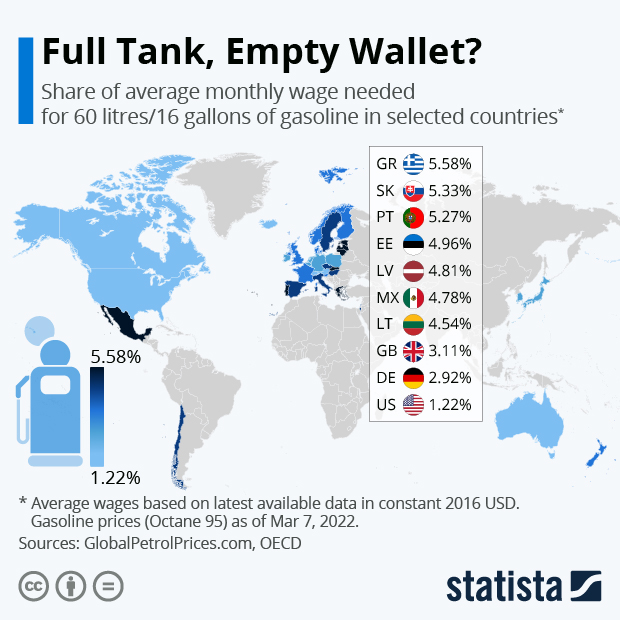
The topic on everyone’s mind lately is how expensive gas is becoming. We’re seeing prices at the pump that we haven’t seen in a long time. How do these prices truly stack up against what is historically normal?
There are a few ways to look at the true price of gas. One important way is how much of someone’s average monthly wages are needed to buy a full tank of gas. Using this framework, prices are beginning to look troubling for many parts of the world. Notably, some countries in Europe as well as Mexico are approaching a critical point.
In Greece, Slovakia and Portugal a tank of gas costs more than 5% of a persons average monthly wages. This is two pronged. Gas prices have sharply increased, and wages in these countries are not very high. Compare that to countries like Germany and The USA, you can see prices are not as troubling since wages in these countries are so high.
Another way to look at gas prices is on an inflation adjusted basis. Inflation adjusted prices per gallon have never been this high before, clocking in at just under $5 per gallon. However, the cost per mile is not as high as it has been in the past. This is primarily due to better gas mileage cars. If you look at gas prices per mile driven, you will see that these levels are not that high relative to historic norms. Right now we are at about 20 cents per mile. In the 1970’s we surpassed 30 cents per mile, even though inflation adjusted prices per gallon were much lower than they are today.
While there are many complexities and different ways to look at the issue, it is obvious that gas prices are quite high today, and beginning to impact lower income areas of the developed world. The full impact of these prices may not be felt on the economy for a few months, but if prices remain this high it will become a drag on productivity.
Some people are even able to profit off of oil price fluctuations. Resources like https://oil-profits.com/ teach trading strategies to for the oil and gas industry.
